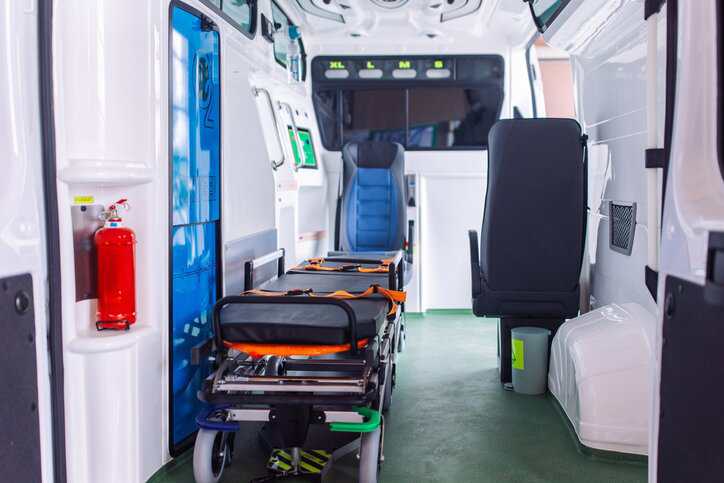AAMI TIR109:2025—External Transport of Medical Devices

The U.S. healthcare transportation market was valued at $21.82 billion in 2017 and is projected to grow to $31.51 billion globally by 2026. This growth demonstrates the increasing demand for efficient transportation of medical devices. The transport of medical devices, however, presents unique logistical challenges in healthcare that require careful planning and execution to assure safety, compliance, and efficiency. AAMI TIR109:2025—External transport of reusable medical devices for processing details guidance for the external transportation of processed medical devices between health care facilities and offsite reprocessing centers.
Why Are Medical Devices Being Transported?
Medical devices and equipment are increasingly being transported from healthcare facilities to off-site locations for use and processing for a variety of reasons, including:
- Centralized processing centers being used to service off-site location
- Delivery to healthcare facilities to borrow instrumentation and equipment (either on a scheduled basis or due to an emergency)
- A high-cost sterilizer located at one facility being used to sterilize items for several facilities
- For use in home treatments
While en route, medical devices and equipment adhere to strict regulations and specifications like AAMI TIR109:2025 to assure that these items transported off site maintain their sterile integrity and proper functioning concerns.
What Is AAMI TIR109:2025?
AAMI TIR109:2025 provides guidance for health care facilities and offsite reprocessing centers for the external transportation of processed medical devices between these facilities (e.g., from one health care facility to another, between offsite reprocessing center and health care facility). This technical information report (TIR) provides guidance on maintaining the integrity of sterilized items and transport for contaminated and processed items. AAMI TIR109:2025 specifies that procedures for packaging and transporting contaminated items offsite for processing must comply with applicable DOT Hazardous Materials Regulation, OSHA Bloodborne Pathogens Standard (29 CFR 1910.1030), and any specific local, state, or federal regulations.
This TIR does not provide guidance for transport of single use items which are supplied sterile from the manufacturer. Single use sterile items are often transported alongside items that have been processed by the facility, such as a picked/loaded case cart.
What Are the Shipping Challenges of Medical Devices?
Shipping medical devices and equipment over roadways can have an adverse impact on their functionality. For instance, medical devices are particularly sensitive to environmental factors such as temperature and humidity—making them vulnerable to damage during transit. This risk can have dire consequences for patient care since delays in delivery can disrupt treatment plans and jeopardize patient health. To mitigate these risks, effective medical devices logical must include practices such as real-time tracking, adherence to regulatory standards, and secure packaging.
Maintaining the Sterile Integrity of Medical Device Packages
The primary concern is to prevent contamination of medical devices during transport, especially for sterile or processed items. To maintain the sterile integrity of medical device packages, there should be a focus on robust packaging materials, secure sealing methods, and comprehensive testing. AAMI TIR109:2025 details that maintaining the sterile integrity of packages is a complex process requiring:
- Environmental controls (e.g., controlled air changes, heating, ventilation, and air conditioning (HVAC)
- Parameters as recommended by ANSI/ASHRAE/ASHE 170: Ventilation of Health Care Facilities
- Appropriate equipment and supplies as well as adequate space
- Qualified, competent personnel who are provided ongoing training
- Available personal protective equipment (PPE)
- Monitoring for quality assurance
Ultimately, the external transport of medical devices, especially sterile or processed ones, requires careful planning and adherence to specific guidelines likes those specified in AAMI TIR109:2025 to assure safety and prevent contamination or damage.
AAMI TIR109:2025—External transport of reusable medical devices for processing is available on the ANSI Webstore.






